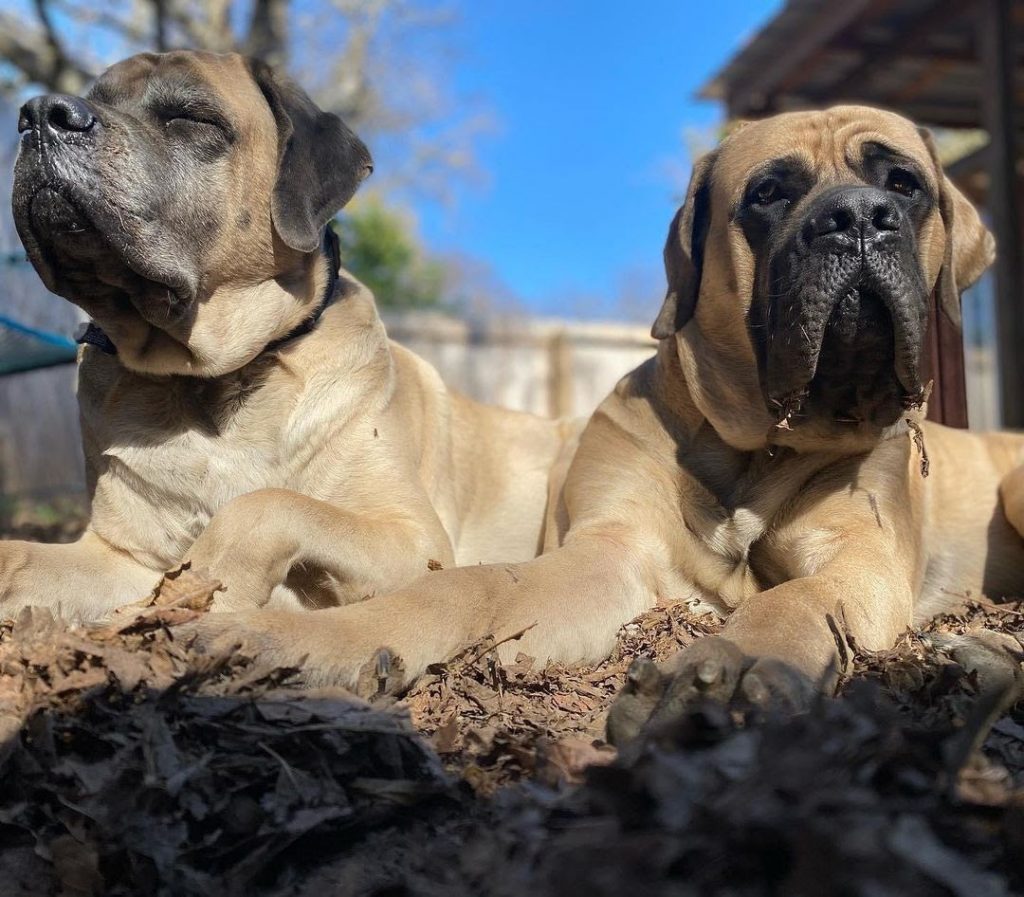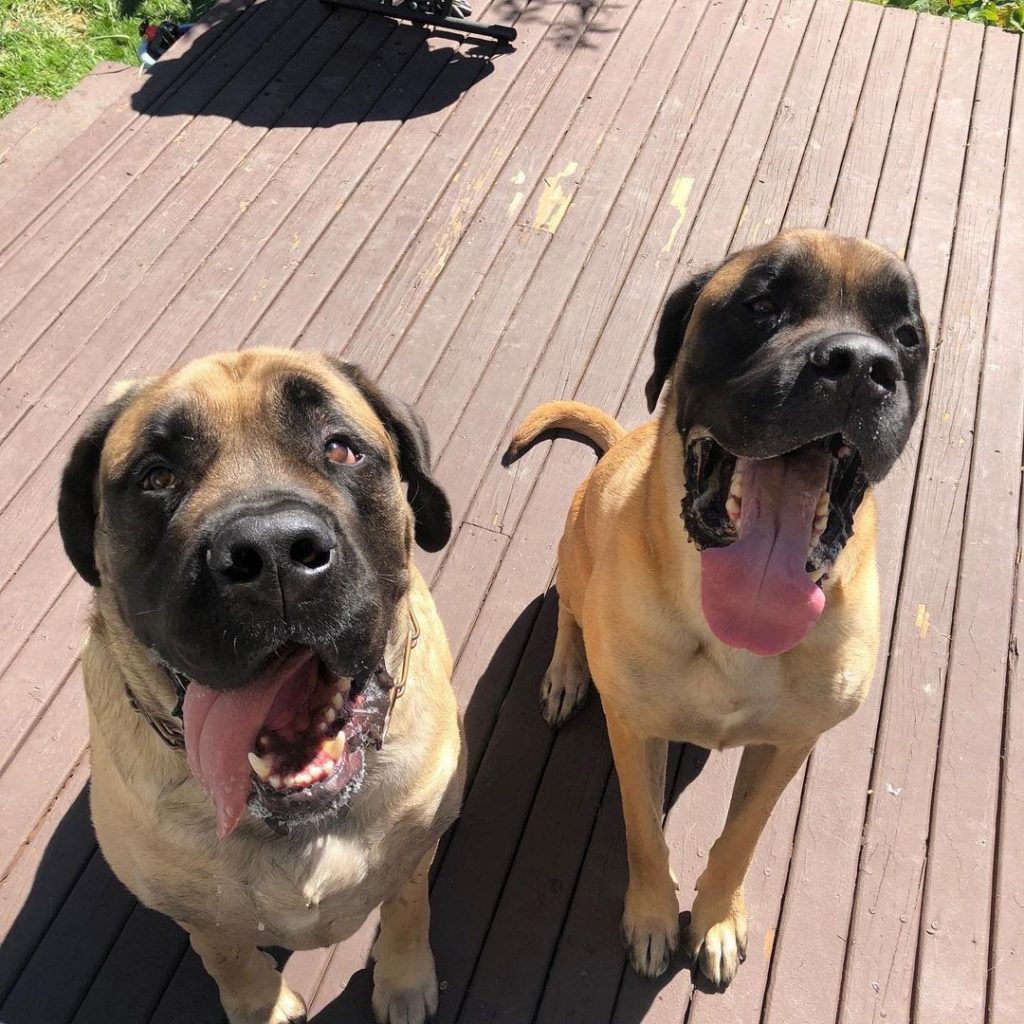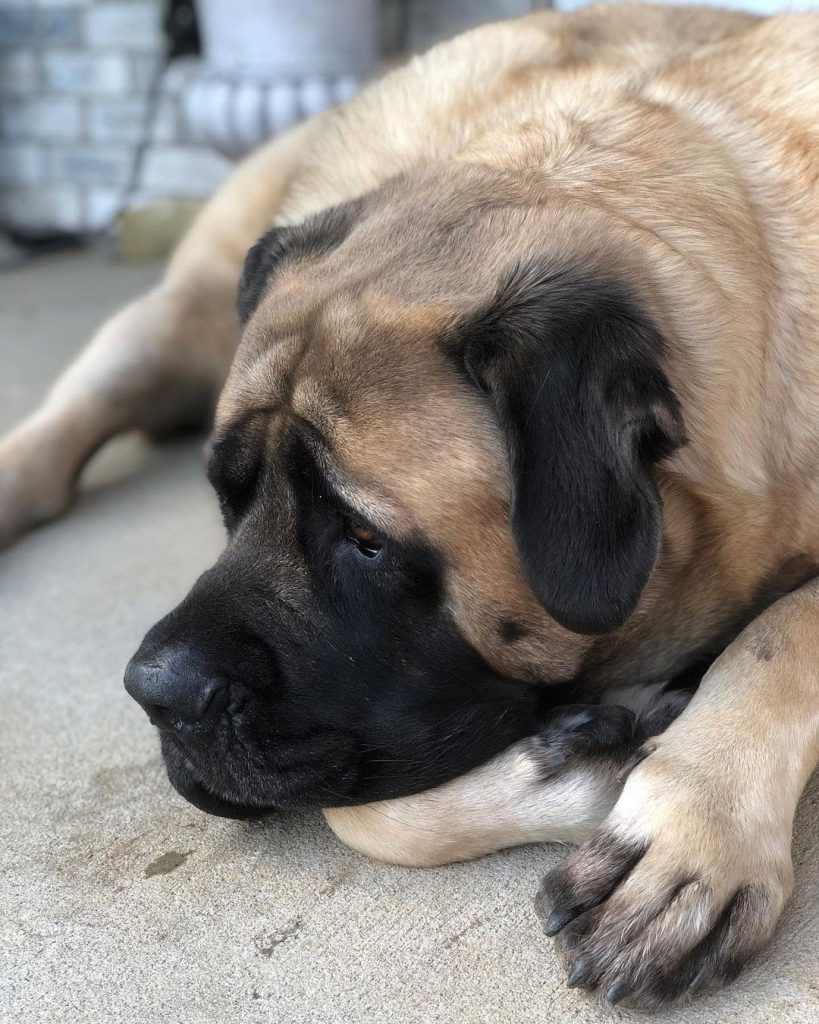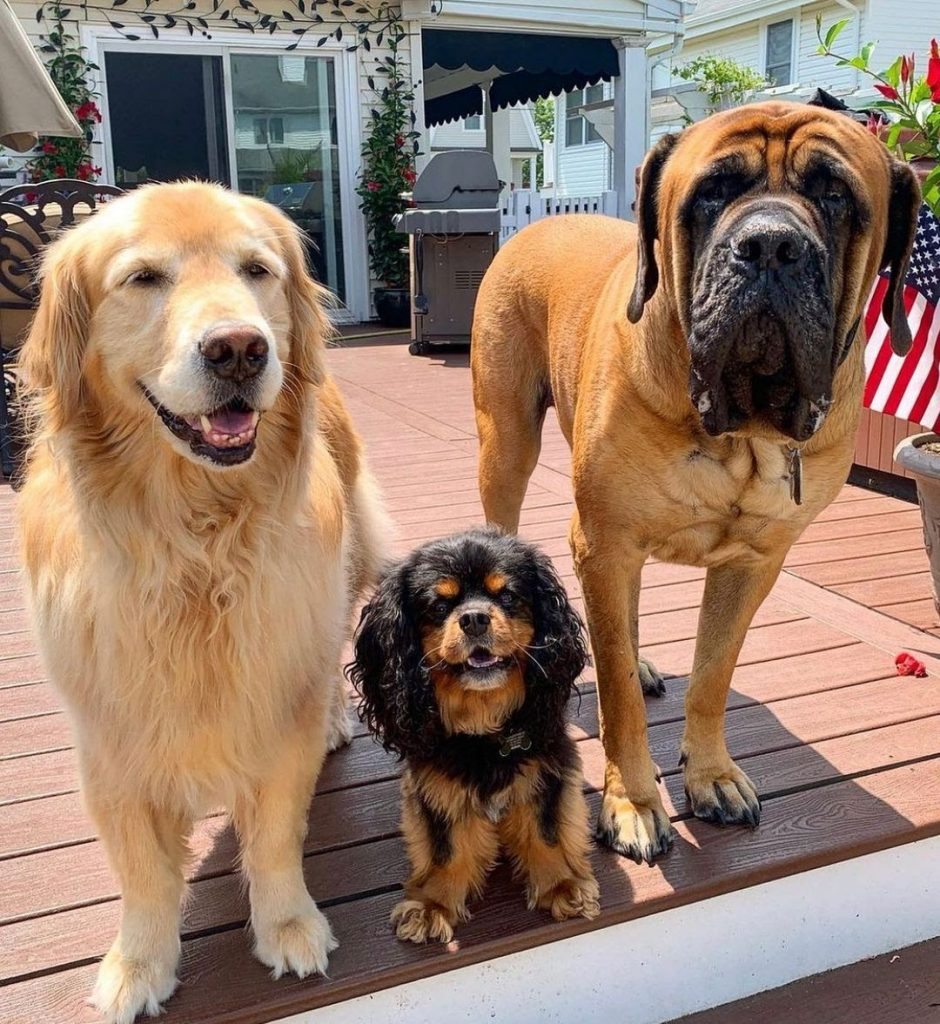Are English Mastiffs Good With Other Dogs? All You Need to Know!
Dubbed as the friendliest Mastiff breed, you surely won’t regret bringing home the English Mastiff! Despite his minimal expression, his calm and even-tempered disposition makes him get along well with other dogs.


We can’t blame you if you want as many dogs as possible. Getting to see various dogs in your yard or inside your home can create an extremely positive environment. However, one of the many concerns of families who are thinking of adopting a new dog is whether their pet will accept the potential family addition.
One major mistake an English Mastiff owner can do is go for a new dog without knowing its temperament and compatibility with his current fur baby. This can end up in chaos! To prevent this from happening, keep reading this article and learn which dog breeds go well with the English Mastiff and more.
Table of Contents
Do English Mastiffs Get Aggressive Toward Other Dogs?


If raised properly well, aggression can be seen nowhere in the English Mastiff breed. Take note that when he got developed in England, breeders specifically thrived hard to mellow his temperament. They understood well that his bloodline originates from warrior-like ancestors and so, to make him suitable for families, the dog has to be domesticated.
Despite that, it remains to be possible for the English Mastiff to exhibit hostility toward other dogs. Mainly, this is the result of poor dog ownership. It is recommended that each English Mastiff puppy should be with his mother for 8 weeks. Being in a litter allows him to interact with his siblings. This is his first socialization.
It does not end there. Once the English Mastiff receives all of his shots, Mastiff parents should then let them get exposed to various places, people, and animals in their 8 to 16 weeks of life. This is to reinforce the socialization experience he had with his littermates.
What to Do if My English Mastiff Shows Aggression With Other Dogs
Aggression would sometimes show if your English Mastiff developed a protective or extreme territorial instinct during his puppy life. When this goes unnoticed, it will go out of hand and his belligerence will end up getting exhibited toward other dogs. The best way to cure this is to add in more effort to socialize him with other canines. Let him learn how to be tolerant.
In some cases, it simply is the result of social anxiety. Studies have shown that 50% of dogs suffer from anxiety and this can lead to unfriendliness toward other dogs, 30% of aggressive dogs have phobias or general anxiety, and the remaining 20% is caused by owner conflicts.


When your canine buddy is being ill-natured toward your other dogs and you suspect that social anxiety is what triggers him to act that way, here are some tips you can follow:
- Work with an animal behaviorist. This will enable you to understand the root cause of your dog’s uncongeniality. He can devise a strategy that can reverse your dog’s bad temper.
- Be observant regarding what scenarios or interactions can provoke him. By finding out what it is, you’d be able to eliminate the stimulant and prevent your Mastiff from being annoyed.
- Remove all visual stimuli that can irritate your English Mastiff. Also, don’t forget to reward him if he shows a positive reaction or behavior.
- When you and your Mastiff are out and about and you are approaching your friend who’s also walking her dog, command your dog to sit. Greet the person and keep it short. Immediately, redirect your dog’s focus to you so he won’t largely mind the other canine.
- Provide your English Mastiff his own space at the start of bringing home a new dog. If there is a boundary between him and the new pet, he’d eventually learn to accept the family addition. Also, this will keep the new dog from getting too close to him which he might interpret as territorial trespassing.
- Keep him away from aggressive dogs. Sometimes, he would end up having no choice but to be confrontational as well if the other canines are taunting him or are too dominant.
- Use medications to ease his anxiety and aggression. Prozac and Clomicalm are two common medications used for dogs who are often feeling anxious.
Indicators That Can Predict Your English Mastiff’s Mood
All English Mastiffs can’t be labeled the same or placed in one category. Upon bringing a new dog home, one of the other things you have to do is to observe your colossal canine. Is his body language showing amiability or is he not open to developing a new bond with the new arrival yet? Here are the signs you have to look out for:
Signs Showing He Is Friendly
- He wags his tail up high when approached by the new dog.
- His body is relaxed and he doesn’t growl, snarl, or show teeth.
- Ears are floppy and relaxed.
- The English Mastiff shows playfulness.
- He is usually silent and calm.
- He comes up voluntarily and cuddles.
- His hair is not raised when the new dog gets closer.
- His overall facial expression is relaxed.
Take note that these are human descriptors that will generally tell if your English Mastiff is friendly. Although most of these would lead us into thinking that your ginormous pet is affable, the listed indicators remain to be, in no way, a sort of a guarantee that he will be non-threatening or accommodating.
Signs Showing He Is Unapproachable
Just like how it is with a friendly English Mastiff, it is also easy to spot if the dog is unwelcoming through his body language. Signs of disagreeableness will often be displayed either through his teeth, ears, or tail. Some of the marks of unapproachability will include the following:
- He growls either because he feels uncomfortable, threatened, or hurt.
- His ears are stiff and alert. This may sometimes indicate that he’s ready for a fight.
- He shows teeth and snarls. When this intensifies, he might end up biting your other dog, and separating the two would be hard to do.
- He looks the other dog in the eye. This establishes dominance. If your new pet looks back and maintains it, this will spark a huge ruckus inside your home!
- He shifts his weight as if he’s ready to spring. Body language and posture will be very obvious if he’s about to attack the other dog. Deflect the situation immediately.
Avoid forcing your dog to be in situations that clearly make him uncomfortable. Developing new bonds takes time just like how it is with humans in establishing trust. Make sure your dog feels comfortable despite the presence of a new dog and keep their spaces in a boundary first. Moreover, never attempt to make one or the other jealous of your attention.
If anxiety shows regularly or more often, it would be time to take your English Mastiff to the vet.
Dog Breeds That Go Well With the English Mastiff
There are various dog breeds that you can choose from if you’re thinking of getting a new dog aside from your English Mastiff. Knowing each of them well and why it makes them a suitable second dog will aid you in determining how successful their relationship can be with your enormous Mastiff buddy.
Here’s a list and description of top dog breeds that are friendly and easy-going toward other dogs:
- Another English Mastiff. If you are well-aware and confident that both your dog and the new English Mastiff were properly socialized, it can be a guarantee that they’ll become great buddies once they’ve adjusted fully well with each other’s presence.
- Labradoodle. There is a strong reason why Labradoodles are popular among many American households. This dog breed is known to be friendly to everyone! He’ll treat your English Mastiff as if he’s his best friend. His affectionate nature overpowers aggression.
- Beagle. The American Kennel Club describes the Beagle as friendly. This is perhaps one of the reasons why he’s consistently on the 6th spot in the breed popularity ranking. He’s notoriously gentle and even-tempered toward other dogs. His pack mentality would suit well with an English Mastiff’s constant need for company.
- Golden Retriever. This golden-coated dog breed does not just excel in being charming! He also tends to get along with other dogs. His affectionate nature will surely be appreciated by a socialized and gentle-natured English Mastiff.
- Labrador Retriever. When this dog breed has been well-trained for obedience, he’ll usually do well with your English Mastiff. He has a high level for adaptation so getting introduced and bonded by your dog won’t pose a challenge for him. Just be careful, however, since even the most well-tempered Lab can be quite a handful when he meets a new dog.
Ways to Know the Compatibility Between Dogs


(From left to right: Golden Retriever, Cavalier King Charles Spaniel, and the English Mastiff)
Aside from considering which breeds suit best with your English Mastiff, know that there are several other things on the checklist that need to be scrutinized as well. There are just two which shouldn’t be ignored:
- Size. Even though English Mastiffs are ideally good-natured and friendly, matching him with a minute dog can be dangerous. Considering that this gigantic beast reaches 230 pounds, a 9-pound Chihuahua might end up getting squashed should the Mastiff accidentally sit on him. Although a relationship between two dogs with great disparity in size may still work, such a case would still need more care and supervision on your part as an owner.
- Sex. If you have a male English Mastiff, going for a female pup as a second dog would be a wise move. By doing so, your current buddy will not find the new dog threatening. It remains possible, however, for two male dogs and two females to coexist since it is largely dependent on their personalities. A puppy and an adult dog are also a great match since the adult dog will not find the young pet as someone who can challenge his authority.
Nevertheless, it is highly recommended to have two dogs of different genders for lesser conflicts. If they are both spayed and/or neutered, there is a greater chance that both dogs will get along well with each other.
Conclusion
When an English Mastiff was handled with intense care during his puppy years, he is going to be capable of forming good relationships with other dogs. This all boils down to how owners treat their doggies.
Once socialization and exposure have been given extreme importance, then conflicts and aggression between him and other dogs are less likely going to manifest.
If ever undesirable behaviors show, understand his personality and avoid resorting to harsh punishments. You can also work with professionals who can aid your English Mastiff in becoming an excellent buddy toward your neighboring dogs or the new puppy which you are about to bring home.
To learn more about this wonderful breed, simply click here.
